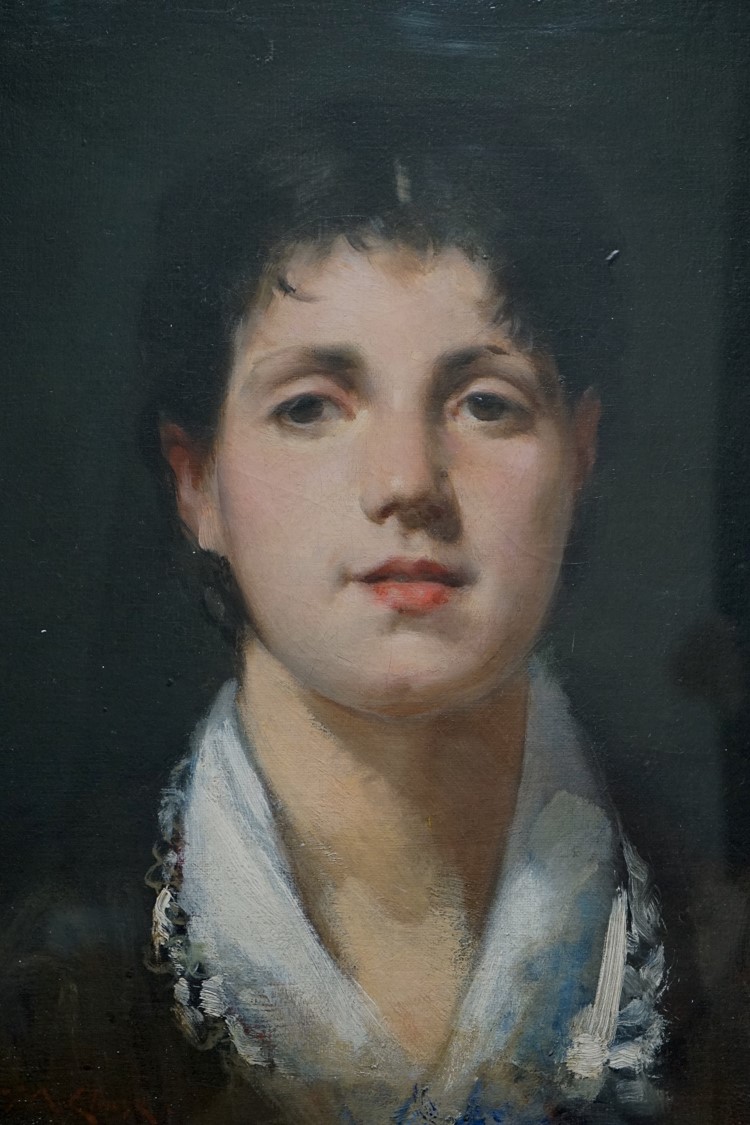William Merritt Chase (1849-1916) is considered one of the most prolific American Impressionists of the late nineteenth century. Born in Nineveh, Indiana, as the son of an aspiring entrepreneur, Chase experienced a very nomadic childhood. Upon his family’s move to Indianapolis, he began to experiment with painting and drawing and developed a love for the artistic practice. After apprenticing with local artists Barton S. Hays (1826-1914) and Jacob Cox (1810-1892), Chase moved to New York City, and in 1869, enrolled at the New York Academy of Design. He reunited with his family in the early 1870s in St. Louis, Missouri, and quickly gained recognition as a portraitist. This led to a few of his patrons funding a trip to Munich, which completely altered his painting style. When Chase arrived back in New York City from his trip abroad, he opened his 10th Street Studio and, according to art collector and curator Ala Story, he “made every attempt not to remain incognito.”[1] His debonair personal aesthetic, booming self-confidence, and open-door studio policy propelled Chase to the forefront of the New York art scene.[2] Drawing inspiration from life and his surroundings, Chase built his fame on a mastery of technique and as a pioneer in painting sunny, genteel scenes of New York City.[3] His eclectic style, characterized by the palettes and brushwork of renowned artists such as Rembrandt (1606-1669) and James Abbott McNeill Whistler (1834-1903), displayed a virtuosity and versatility that mixed the old world with a modern sensibility. Although he was well versed in landscapes and still lifes, Chase was especially known for his portraiture, and his sitters included many prominent people of the time. However, to attract clients, he would often paint portraits of his wife, daughters, or female students as “samples” of his skill to attract commissions. Chase painted Portrait of a Lady shortly after he and his wife, Alice Gerson Chase, moved to Greenwich Village. While the identity of the sitter is not definitively known, it may be Alice, and as such, the painting may have functioned as a sample of his work. The sitter gazes out past the viewer with lively brown eyes and the dark, monochrome background of the painting contrasts against her warm flesh, pink lips, and rosy cheeks. Chase’s draftsman-like brushwork, characterized by the smoothness of line and clarity of image, creates a sweeping, painterly impression. The image is extraordinarily sensitive, a quality enhanced by the rapid fluidity of Chase’s technique. Though his reputation eventually declined with the rise of various abstract art movements, Chase exemplified the modern American artist at the turn of the century. Despite his old master impulses, he tirelessly championed American art and created a modern artistic language to capture a distinctive account of time and place. [4] Portrait of a Lady is currently on view in Highlights from the Permanent Collection through August 4, 2019.
-Emily Dugan, Curatorial Intern
[1] Ala Story, “His Life and Work,” in William Merritt Chase 1849-1916 (Los Angeles, CA: University of California Art Gallery, 1964).[2] Ronald G. Pisano, William Merritt Chase: Master of American Impressionism, Spanierman Gallery 1994-1995[3] Kimberly Orcutt, “William Merritt Chase and Robert Henri,” American Art Review XIX, no. 1 (2007): 80.[4] H. Barbara Weinberg, “William Merritt Chase (1849-1916),” in The Heilbrunn Timeline of Art History (New York: The Metropolitan Museum of Art, 2011).


